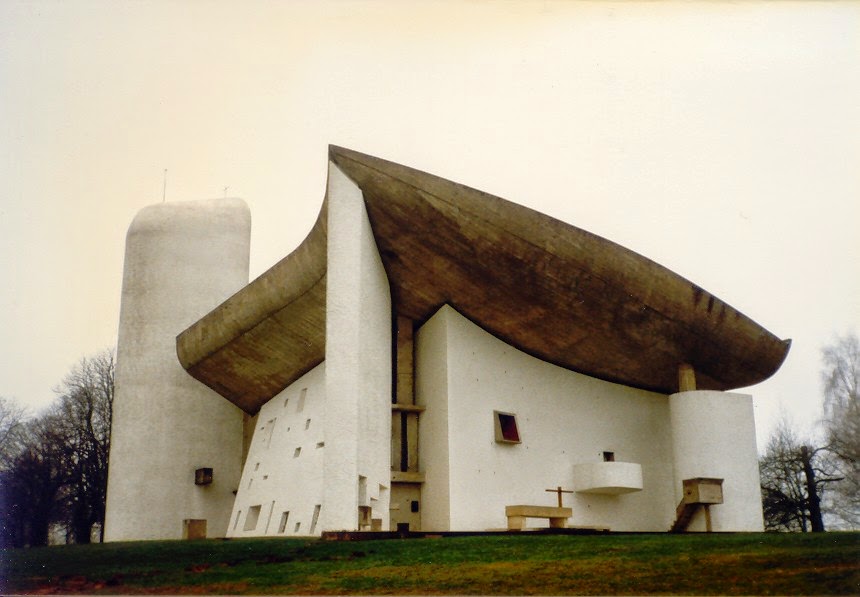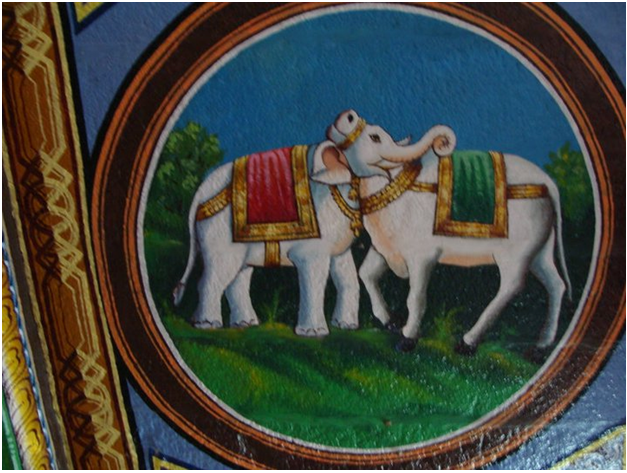
ILLUSIONISM IN ARCHITECTURE
J.K Rowling has prophesized –
“Imagination is not only the uniquely human capacity to envision that which is not, and, therefore, the only foundation of all invention and innovation. In it’s arguably most trans-formative and revelatory capacity, it is the power that enables us to empathize experiences which never actually happened.”
This is one of the long sought understandings in life – what is difference between reality imagination and illusion. Although that’s not the point of discussion, but we just went through illusion in psychology, the interesting thing about the illusions is even though you know they are wrong, you still can’t see it right. God made the foam look real and the real an illusion. He concealed the sea and made the foam visible, the wind invisible, and the dust manifest. You see the dust whirling, but how can the dust rise by itself? You see the foam, but not the ocean. This is how illusion works. as French Phenomenological philosopher Maurice Marleau Ponty says “Vision is brain’s way of touching”. Illusion is all about doping one’s mind with an idea which actually never existed. The term illusion refers to a specific form of sensory distortion. Unlike hallucination which is a distortion in the absence of stimulus an illusion describes a misinterpretation of a true sense.
We are lucky to be one of those people who wish to build “Sandcastles” through ideas, to make a place where our imagination can wander. Illusion had fancies over the minds of people over the generations in History which is continued till the date. Effect of illusion when combined with architectural and artistic elements, a parallel new dimension is created in the brains of intellectual species. Methods of illusion had been widely used since the evolution of mankind into social beings.Archaeologist Duncan Caldwell has surveyed the Paleolithic art of several caves in France and discovered a recurring theme that he says can’t be simply accidental. Throughout the cave of Faun-de-gaume, and examples from other sites as well, drawings of woolly Mammoth and Bisons often share certain lines or other features, creating overlapping images that can be first as one Animal, then the other. Rarely, if ever, do they do the same with other Animals.
Similar examples are cited in the Meenakshi Temple, Madurai, India. The ceiling of Meenakshi Temple is covered with intricate patterns and images which creates phantasm when the spectator’s observe.

-Meenakshi Temple, Madurai
Paintings do actually appeal in terms of optical illusion, however, there exists another clever ingenuity of ILLUSIONISM IN ARCHITECTURE which was first used by the Greeks. The earliest record of illusionism is found in about 5th to 4th century B.C. that is about a competition between two painters. Trompe-l’oiel (Illusion) was reintroduced during the Renaissance period becoming the principal method of “Realistic Real Representation”.
Renaissance Architecture is the architecture of the period between the early 15th and early 17th centuries in different regions of Europe, demonstrating a conscious revival and development of certain elements of ancient Greek and Roman thought and material culture. Stylistically, Renaissance Architecture followed Gothic Architecture and was succeeded by Baroque Architecture. Though the phrase originates in the Baroque period, when it refers to perspective illusionism, Tromp-l’oeil dates much further back. It was (and is) often employed in murals. Instances from Greek and Roman times are known, for instance in Pompeii. A typical Tromp-l’oeil mural might be depict a window, door, or halfway, intended to suggests a larger room. Perspective theories in the 17th century allowed a more fully integrated approach to Architectural illusion, which when used by painters to “open up” the spaces of a wall or ceiling is known as Qudatratura. Examples include Pietro da Cortona’s Allegory of Divine Providence in the Palazzo Barberini and Andrea Pozzo’s Apotheosis of St. Ignatius on the ceiling of the Roman Church of Sant’Ignazio. Andrea Pozzo was an Italian Baroque Architect. He was best known for his Grandiose frescoes using illusionistic technique called Quadratura, in which architecture and fancies are intermixed. They are remarkable and emblematic creation of High Roman Baroque.
Fictional Tromp-l’oeil appears in many Looney tunes, such as the Road Runner cartoons, where, for example, Wile E. Coyote paints a tunnel. This is usually followed by the Coyote’s foolishly trying to run through the tunnel after the Road Runner, only to smash into the hard rock face.
.jpg)
Also it is featured in fictional movies and novels like Harry Potter and Indiana Jones.One of the best examples can be seen in one of the Movies of Christopher Nolan’s INCEPTION

Greek buildings Narrate many Different types of Illusions, for they may be illusions of symmetry, scale,distance weightlessness and even dematerialization. The first use of Entasis is probably in the later Temple of Aphaia in the 490s B.C. and most often seen in the temples of Doric order built by the Ancient Greeks in the Renaissance Building in Hellenistic period and Roman Architecture. An early-Articulated and still widespread view, espoused by Mathematician Hero of Alexandria, is that Entasis corrects the optical illusion of concavity in the columns which the fallible human eye would create if a correction were not made.

–Entasis
-Parthenon, Acropolis
The Greatest of all examples cited in the architecture of Greek Civilization is Parthenon, Acropolis. In Parthenon the corner columns are made to be 1/40th larger in Diameter than the other column and the spaces around them smaller than the rest by about 25cm. This corrects the illusion created by the bright background of the sky, that they appear to be thinner and further apart than the further columns that stand in front of the darker building wall.
In India. legends such as Kalidasa take us to the entire different world of illusions by his writings for example Malvikagnimitram.

मालविकाग्निमित्रम
Also the art of Camouflage (to disguise someone to be something else) was widely used in the battles between the emperors for the thrones, as mentioned about Chandragupta Maurya when he was in the process of unification of India. The Architectural icon of India, the “crown of palaces” Taj Mahal is also product of many different types of Illusions. One of the major illusions is the correctional Illusion, the four minarets surrounding the Taj Mahal were built angled away from the Taj, so that in case of a natural disaster the minarets wouldn’t fall on the main structure. Moreover, architectural illusion makes it so that if the minarets weren’t angled at all. they would appear to be angled toward the Taj. The Taj Mahal utilize architectural aspects to create the Illusion that exists, also it exhibits the “patterned optical illusion” on the floor of marbles.

In the Twentieth Century, artists began to play with the perspective by drawing impossible objects. These objects included stairs that always go up or cubes where the back meets the front. Such works were popularized by artist M.C. Escher and mathematician Roger Penrose. Although referred to as the Necker cube and the Penrose triangle can be built by using ANAMORPHOSIS when viewed at certain angle, such sculptures appears as the so called impossible objects.

-Penrose Staircase
Architecture of Illusions are installations based on specific visual illusion, generated by the design of the geometric characteristics of 3-Dimensional Space. One of the installations deals with the well known Ames Illusion better known as the distorted room demonstrated by the psychologist Albert Ames. A room, trapezoidal in both plan and section is perceived as a usual rectangular room from a determined view point. People moving along the ‘distorted’ side of the room are seen as enlarging or shrinking and the two objects of the same size were perceived at considerably different scales.

One of the most famous Architects of all time Le Corbusier designed the expressionist modernist chapel Notre Dame du Haut in 1955 which became the icon of 20th century European Architecture. The chapel gives the impression that it was designed inside out. Side chapels puncture the massive main roof permitting controlled light to illuminate them individually.

Many renowned Architects like Perkin Eastman, Leo A Daly and Chapman Taylor are a few names who use massive illusions in their Designs. They twist and turn the structure in such a manner that it becomes an optical Marvel. More recently,

Rolls Royce cars all used illusion in their grilles to give an illusion of Greater Solidity.

When we talk about Architecture and Illusionism in Architecture, it is meant for comfort and eternal joy and Happiness which comes in the minds of person who is experiencing it. In 2002 The Sky Factory was formed which envisioned the same via illusion. They envisioned to being inside a world wherein the pristine beauty of nature exists, where fine arts and technology help to deliver the peace and balance that come from authentic experiences of the depth of Nature.
Throughout the History, Illusion in Architecture have appealed to the minds of people and enthralled their souls with the joys of Illusions. In future when people will fight for places to live and bestow themselves, Illusion will provide them big spaces in real small lands.
As Anonymously said – If there exists something in real…..
That’s ILLUSION
Pages
Get in touch
- Tower 5/1103, Sunworld Vanalika,
- Sector-107,Noida,Uttar
- Pradesh (201304), India
- +(91) 9457214494
- [email protected]

